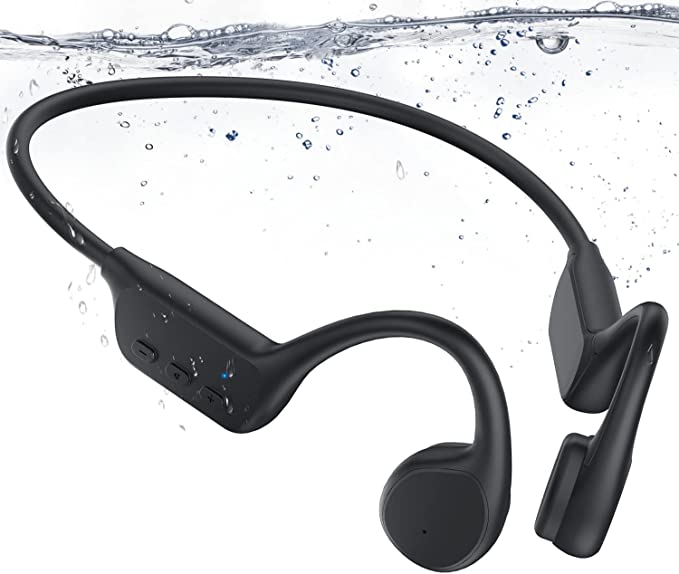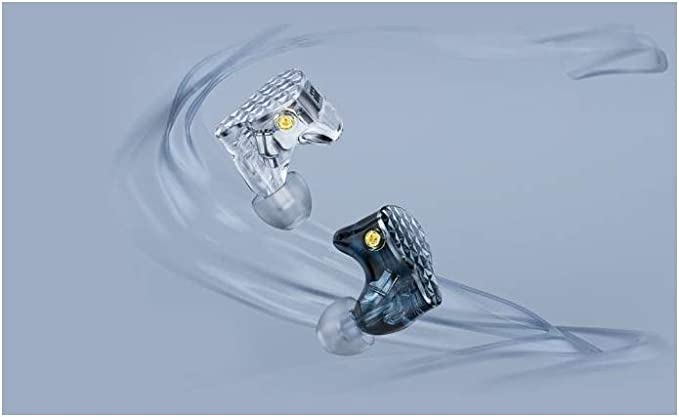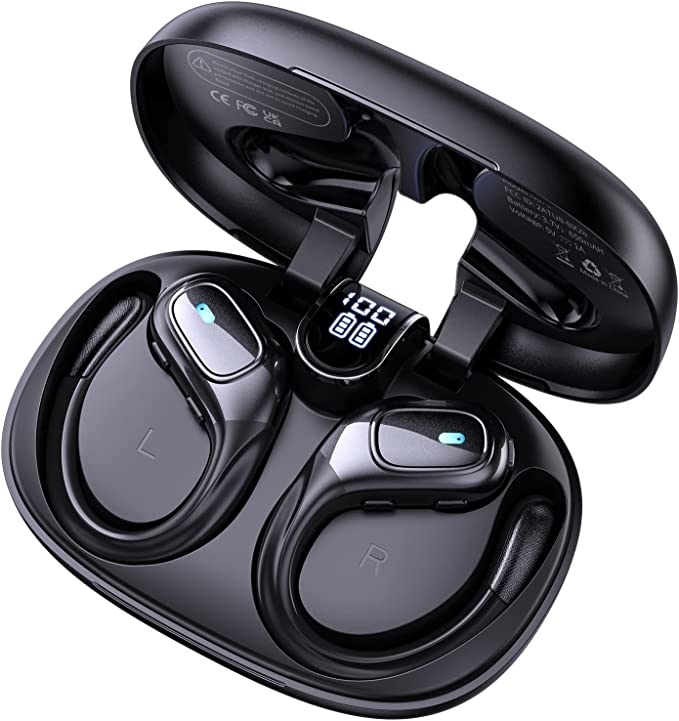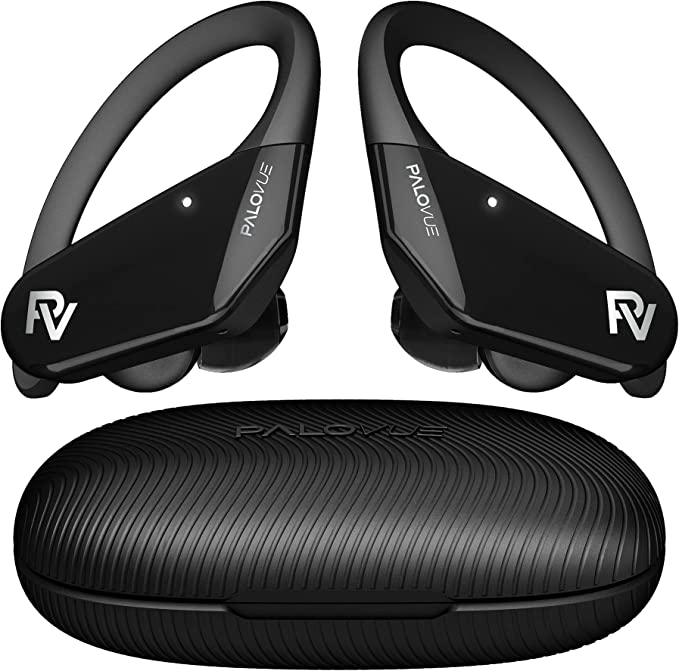We live in a world saturated with sound, much of it curated by us, for us, delivered intimately through personal audio devices. Yet, there’s a subtle tension in this auditory immersion. How often have you found yourself lost in a captivating podcast, only to belatedly notice someone trying to get your attention? Or perhaps, while jogging to an energizing playlist, you’ve had a near-miss with a cyclist who approached unheard? This is the modern listener’s dilemma: the desire for rich, personal soundscapes versus the non-negotiable need to remain connected and aware of our physical surroundings. What if, however, sound could take a different, less conventional path to our perception, a route that allows both worlds to coexist? This is precisely the promise of bone conduction technology, and today, we’ll explore its fascinating intricacies using the Hamuti X7 Bone Conduction Headphones as our guide on this alternative auditory journey.

Echoes from the Past, Vibrations of the Future: The Tale of Bone Conduction
To truly appreciate the innovation at play, we must first understand that hearing isn’t a one-trick pony. The most familiar route for sound is air conduction. Sound waves, those invisible ripples in the air, are funnelled by our outer ears into the ear canal, causing the eardrum to vibrate. These vibrations are then mechanically transferred by a delicate chain of tiny bones (the ossicles) in the middle ear to the cochlea, the snail-shaped, fluid-filled organ of hearing in the inner ear. Here, these mechanical vibrations are converted into electrical impulses that the auditory nerve carries to the brain, which finally interprets them as the sounds we recognize – a voice, a melody, a warning.
Bone conduction, however, is like a VIP entrance for sound, bypassing the outer and middle ear. Instead of relying on air, it uses the bones of our skull as a direct conduit. Imagine a tiny, precisely tuned percussion instrument playing directly against your cheekbones or other cranial bones. These subtle vibrations travel through the bone structure straight to the cochlea. If you’ve ever hummed a tune with your fingers gently plugging your ears, you’ve experienced a rudimentary form of bone conduction – the sound seems to resonate from within your head. It’s a more ancient, primal way of sensing vibrations, one that even aquatic mammals like whales utilize, sensing underwater sounds partly through their jawbones.
This isn’t a recent discovery. Legend has it that Ludwig van Beethoven, as his hearing via air conduction tragically waned, found he could still perceive the notes of his piano by clenching a rod in his teeth and touching the other end to the instrument. The vibrations travelled through the rod, his jaw, and skull to his still-functional inner ears. This ingenious adaptation highlights the core principle. Over time, bone conduction evolved from such anecdotal observations into more formalized applications, powering early hearing aids for individuals with conductive hearing loss (where the outer or middle ear doesn’t transmit sound effectively) and serving in specialized communication systems for military personnel or divers, where conventional headphones would be impractical or unsafe.
The intrinsic brilliance of this technology, especially in the context of modern personal audio like the Hamuti X7, lies in what it doesn’t do: it doesn’t obstruct the ear canal. This single fact unlocks a cascade of benefits. Your ears remain open, receptive to the ambient sounds of your environment – the approaching footsteps, the distant siren, the friendly greeting. This is the gift of situational awareness. Furthermore, for individuals who find in-ear devices uncomfortable, or who are prone to ear infections from occluded ear canals, bone conduction offers a gentler, less invasive listening experience.

The Hamuti X7 Deconstructed: Where Science Meets Experience
The Hamuti X7 headphones are more than just a vehicle for sound; they are a carefully engineered system designed to leverage the unique advantages of bone conduction. Let’s peel back the layers and see how science is woven into each key feature.
The Freedom of Unfiltered Reality: The Open-Ear Design Philosophy
The most immediate and profound impact of the Hamuti X7’s bone conduction technology is its Open-Ear Design. This isn’t merely a stylistic choice; it’s a direct consequence of how it delivers sound. Because the transducers rest on your cheekbones, just in front of your ears, your ear canals remain completely open. From a physics perspective, this means ambient sound waves still have an unfettered path to your eardrums, allowing for natural hearing of your surroundings.
The everyday value of this is immense. Imagine you’re cycling through a bustling city park. With traditional headphones, the blare of a horn or the chime of another cyclist’s bell might be dangerously muted. With an open-ear design, these crucial auditory cues remain clear. You’re listening to your preferred soundtrack, but you’re also an active, aware participant in the world around you. It’s about more than just avoiding hazards; it’s about maintaining a connection. It’s hearing your running partner’s comment without needing to pause your music, or listening to an audiobook while still being able to hear your children playing nearby. As many users of such technology attest, the ability to seamlessly blend personal audio with environmental awareness isn’t just convenient; it’s often described as a “game-changer” for safety and presence. According to the product information, this is a key design focus, aiming to provide a “premium audio experience even in noisy environments” while keeping you connected.

Dancing with the Deep: IP68 Waterproofing & the Magic of Onboard MP3
For the active individual, resilience to the elements is paramount. The Hamuti X7, according to its specifications, boasts an IP68 waterproof rating. Let’s quickly decode this: the “IP” stands for Ingress Protection. The first digit, ‘6’, signifies that the device is completely dust-tight – no ingress of dust is permitted. The second digit, ‘8’, indicates protection against prolonged effects of immersion in water under pressure, generally meaning it can handle submersion deeper than 1 meter for an extended period. This robust sealing makes the X7 an excellent companion for sweaty workouts, rainy runs, or even a dusty trail hike.
However, for swimmers, there’s an aquatic conundrum. Bluetooth signals, which are a form of radio waves, are significantly attenuated (weakened and absorbed) by water. Think of trying to shout to someone underwater; the sound doesn’t travel clearly or far. Similarly, streaming music from your phone to Bluetooth headphones while your head is submerged is, for all practical purposes, an exercise in frustration. The water itself acts as a barrier.
This is where the Hamuti X7’s engineering presents a masterstroke: a built-in 32GB MP3 player. This feature, as highlighted in its description (“Tip: Bluetooth cannot transmit in water. Please use MP3 mode to play”), transforms the headphones into a self-contained underwater audio system. By loading your favorite tracks directly onto the headphones (a process users describe as a simple drag-and-drop affair), you bypass the Bluetooth limitation entirely. This isn’t just about having storage; it’s a deliberate design choice that unlocks a whole new domain for audio enjoyment. Imagine the meditative rhythm of lap swimming, now accompanied by your personal soundtrack, transforming a monotonous workout into an immersive experience. User feedback often mentions the surprising clarity and loudness of audio in MP3 mode when underwater, a testament to the directness of bone conduction when the variables of air and water interference with Bluetooth are removed.

The Unseen Connection: Bluetooth 5.0 & the Luxury of 32GB
When you’re on dry land, the Hamuti X7 utilizes Wireless Bluetooth 5.0 for its connection, as stated in its product details. This version of the Bluetooth standard offers several general improvements over its predecessors, including potentially better range, increased data transfer speed, and more stable, power-efficient connections. For the user, this translates to a more reliable wireless handshake with your phone or other Bluetooth-enabled devices, meaning fewer dropouts while you’re on the move.
Complementing this is the aforementioned 32GB of built-in memory. In an age where streaming often reigns supreme, having such a substantial local storage capacity is a distinct advantage. It’s a personal audio vault that can hold, by some estimates, around 8,000 songs. This liberates you from needing your phone for every audio experience. Heading out for a run and want to travel light? Or perhaps you want to conserve your phone’s battery on a long hike? The onboard memory ensures your soundtrack is always with you, independent of cellular signals or streaming subscriptions. This “phone-free” aspect is a recurring theme in what makes such devices appealing.

Engineered for Endurance, Designed for Disappearance: Titanium & Ergonomics
The physical demands of an active lifestyle require hardware that is both tough and unobtrusive. The Hamuti X7, according to its product information, features a wraparound titanium frame and boasts an ultra-light design, weighing in at a mere 30 to 32 grams (just over an ounce). The choice of titanium is significant. In the realm of materials science, titanium is celebrated for its exceptional strength-to-weight ratio – it’s as strong as steel but about 45% lighter. It also exhibits excellent corrosion resistance, crucial for a device routinely exposed to sweat and moisture, and a degree of flexibility that allows for a secure yet comfortable fit.
The art of ergonomics is deeply embedded in this design. A device intended for prolonged wear during dynamic activities must distribute its minimal weight effectively to avoid creating pressure points. The wraparound style, common in sports headphones, aims to provide stability, ensuring the headphones stay put during vigorous movement. The goal is to achieve a “wear-and-forget” experience, where the technology becomes a seamless extension of the user, so comfortable and light that its presence is barely registered, allowing full focus on the activity at hand. The product description emphasizes this, stating it’s “comfortable to wear, no pain for long time wearing.”

The Symphony of Sensation: Understanding the Bone Conduction Audio Experience
Listening through bone conduction is, undeniably, a different sensory experience than listening through traditional air-conduction headphones. It’s not necessarily better or worse, but it has a unique character. One of the most commonly discussed aspects is bass reproduction. Because bone conduction bypasses the resonant cavities of the outer and middle ear, which play a role in how we perceive low frequencies, deep bass notes might feel more like a subtle, tactile vibration than the booming sensation one might get from over-ear or in-ear headphones that create a seal. It’s a cleaner, perhaps more analytical bass, but potentially less impactful for those who crave that visceral rumble.
Conversely, many users find that vocals and mid-range frequencies come through with remarkable clarity. Spoken word content like podcasts and audiobooks can be particularly well-suited to bone conduction, as the nuances of speech are often rendered very distinctly.
Crucially, the open-ear nature means the perceived sound is always a blend of your chosen audio and the ambient environment. This is the core design philosophy. If you’re seeking an isolated, noise-canceling vacuum to critically analyze every note of a complex orchestral piece, bone conduction headphones like the Hamuti X7 are likely not your first choice. Their strength lies in integration, not isolation. They offer a personal soundtrack that overlays, rather than obliterates, the soundscape of your life. User reviews frequently echo this: what might be perceived as a lack of “oomph” or noise isolation by an audiophile in a quiet room is precisely the feature a cyclist or runner values for safety on the road. Some users even note that the perceived loudness and quality can be better in MP3 mode underwater, where the direct conduction has fewer competing ambient sounds and the water itself may subtly alter the transmission characteristics.
Beyond music, voice call quality is another important consideration. The microphones need to effectively pick up the user’s voice while minimizing background noise, and the bone-conducted audio of the other person’s voice needs to be clear. While the provided data doesn’t heavily focus on call performance, it’s a standard feature of Bluetooth headphones.
The Open-Ear Renaissance: More Than Just Headphones, It’s a Lifestyle Shift
The growing interest in bone conduction headphones like the Hamuti X7 isn’t just about a novel technology; it reflects a broader shift in how we want to interact with our personal tech and the world around us. There’s an increasing appreciation for devices that integrate seamlessly and unobtrusively into our lives, rather than demanding our full, isolated attention.
In North America, and indeed globally, awareness around personal safety during outdoor activities – be it running, cycling, or simply walking in urban environments – is a significant driver. The ability to enjoy audio content without sacrificing auditory awareness addresses a critical need. Furthermore, the desire for comfort during extended wear is pushing consumers away from headphones that cause ear fatigue or discomfort.
Beyond sports, the open-ear concept resonates with anyone who needs to remain sonically connected to their immediate environment – parents supervising children, individuals working in collaborative spaces (or home offices where the doorbell or a family member might need attention), or anyone who simply prefers not to have their ear canals constantly plugged. It’s about choosing presence, about being available to the spontaneous interactions and auditory cues of daily life, even while enjoying a personal audio stream. The Hamuti X7, with its blend of sport-focused features and the fundamental benefit of open-ear listening, taps directly into this evolving user preference for technology that enhances, rather than eclipses, their real-world experience.

Coda: Listening to the World, Differently
The Hamuti X7 Bone Conduction Headphones serve as a compelling illustration of how an old principle – sensing sound through vibration – can be reimagined with modern engineering to meet contemporary needs. It’s a technology that invites us to reconsider our relationship with personal audio, suggesting that immersion doesn’t have to mean isolation. By delivering sound directly to our inner ear while leaving our outer ears free to engage with our surroundings, devices like the X7 offer a pathway to a more integrated, aware, and often safer listening experience.
The journey of sound is a miraculous one, and bone conduction reveals yet another of its fascinating pathways. As we continue to weave technology ever more intricately into the fabric of our lives, the promise of a listening experience that harmonizes our digital soundtracks with the rich, unpredictable symphony of the physical world is not just appealing – it feels increasingly essential. The future of listening, it seems, is an aware one.




